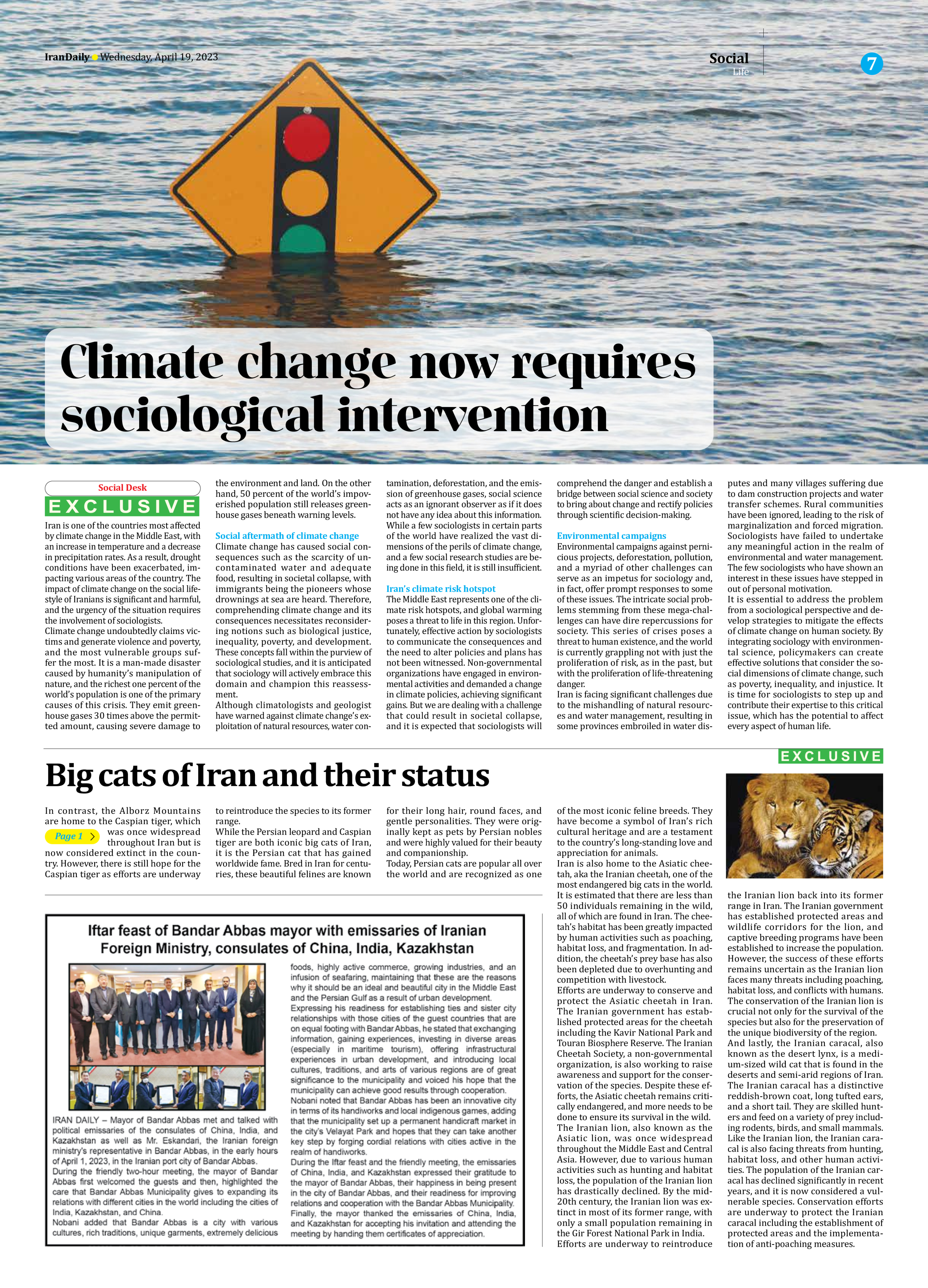
Big cats of Iran and their status
Page 1
In contrast, the Alborz Mountains are home to the Caspian tiger, which was once widespread throughout Iran but is now considered extinct in the country. However, there is still hope for the Caspian tiger as efforts are underway to reintroduce the species to its former range.
While the Persian leopard and Caspian tiger are both iconic big cats of Iran, it is the Persian cat that has gained worldwide fame. Bred in Iran for centuries, these beautiful felines are known for their long hair, round faces, and gentle personalities. They were originally kept as pets by Persian nobles and were highly valued for their beauty and companionship.
Today, Persian cats are popular all over the world and are recognized as one of the most iconic feline breeds. They have become a symbol of Iran’s rich cultural heritage and are a testament to the country’s long-standing love and appreciation for animals.
Iran is also home to the Asiatic cheetah, aka the Iranian cheetah, one of the most endangered big cats in the world. It is estimated that there are less than 50 individuals remaining in the wild, all of which are found in Iran. The cheetah’s habitat has been greatly impacted by human activities such as poaching, habitat loss, and fragmentation. In addition, the cheetah’s prey base has also been depleted due to overhunting and competition with livestock.
Efforts are underway to conserve and protect the Asiatic cheetah in Iran. The Iranian government has established protected areas for the cheetah including the Kavir National Park and Touran Biosphere Reserve. The Iranian Cheetah Society, a non-governmental organization, is also working to raise awareness and support for the conservation of the species. Despite these efforts, the Asiatic cheetah remains critically endangered, and more needs to be done to ensure its survival in the wild.
The Iranian lion, also known as the Asiatic lion, was once widespread throughout the Middle East and Central Asia. However, due to various human activities such as hunting and habitat loss, the population of the Iranian lion has drastically declined. By the mid-20th century, the Iranian lion was extinct in most of its former range, with only a small population remaining in the Gir Forest National Park in India.
Efforts are underway to reintroduce the Iranian lion back into its former range in Iran. The Iranian government has established protected areas and wildlife corridors for the lion, and captive breeding programs have been established to increase the population. However, the success of these efforts remains uncertain as the Iranian lion faces many threats including poaching, habitat loss, and conflicts with humans. The conservation of the Iranian lion is crucial not only for the survival of the species but also for the preservation of the unique biodiversity of the region.
And lastly, the Iranian caracal, also known as the desert lynx, is a medium-sized wild cat that is found in the deserts and semi-arid regions of Iran. The Iranian caracal has a distinctive reddish-brown coat, long tufted ears, and a short tail. They are skilled hunters and feed on a variety of prey including rodents, birds, and small mammals.
Like the Iranian lion, the Iranian caracal is also facing threats from hunting, habitat loss, and other human activities. The population of the Iranian caracal has declined significantly in recent years, and it is now considered a vulnerable species. Conservation efforts are underway to protect the Iranian caracal including the establishment of protected areas and the implementation of anti-poaching measures.







